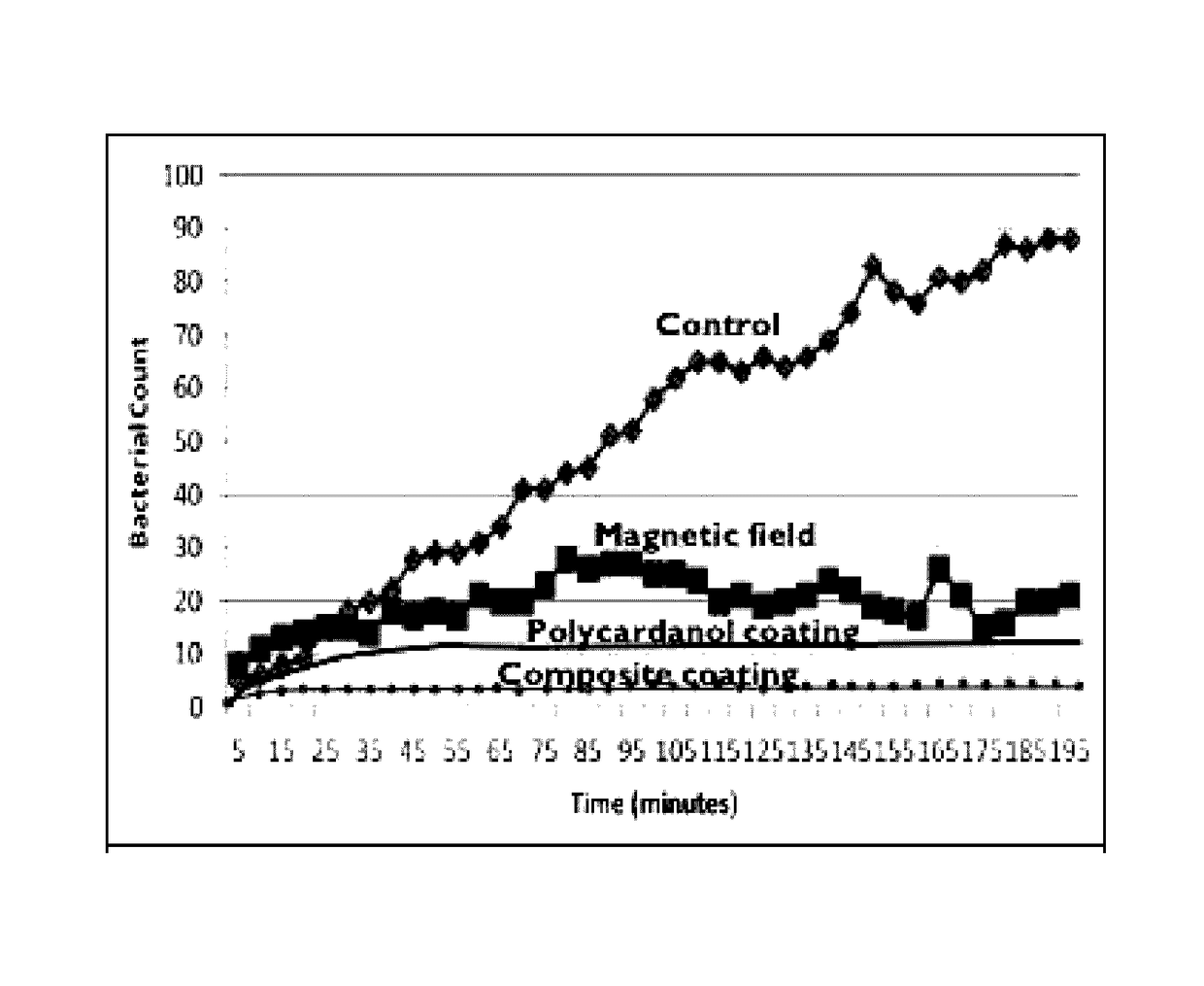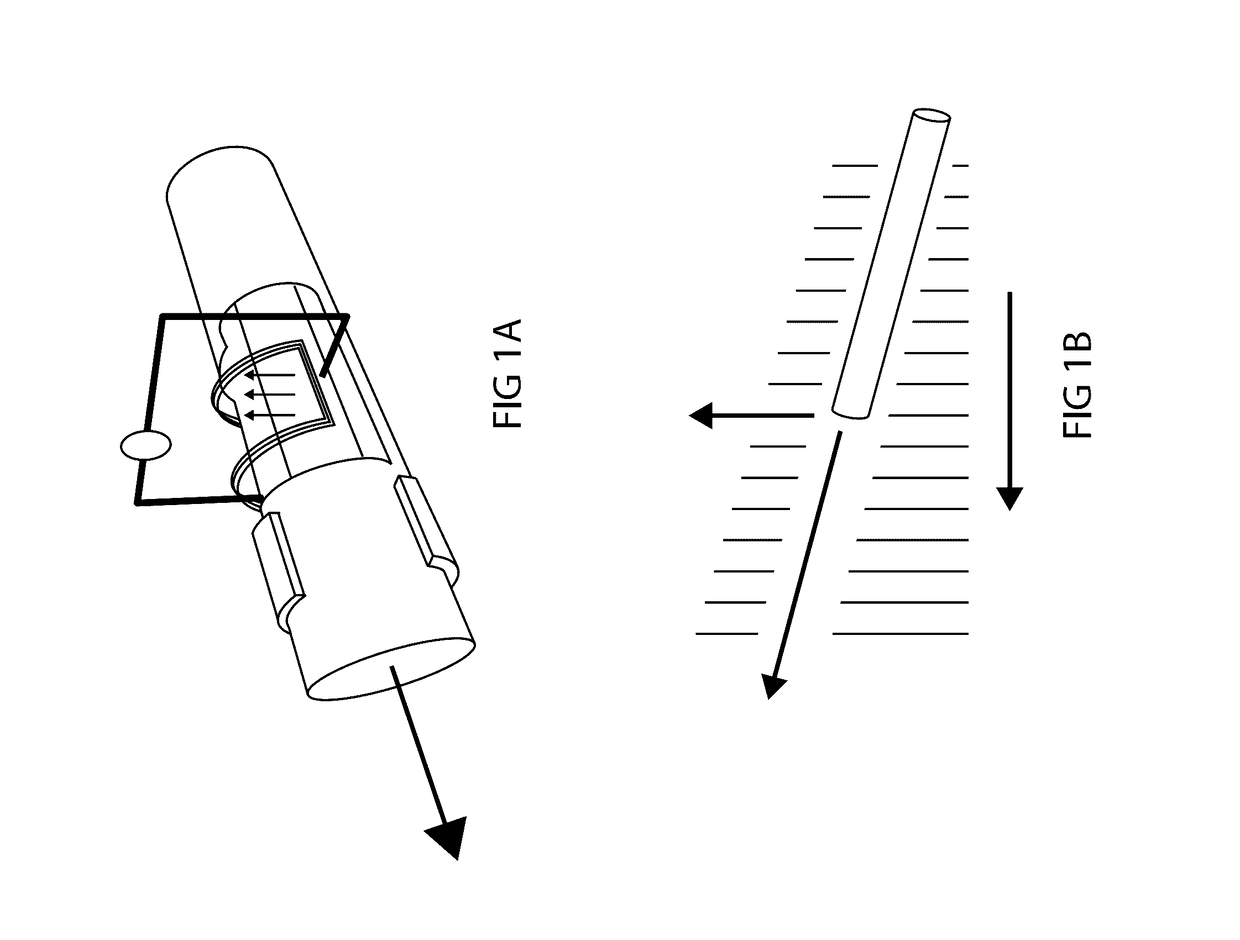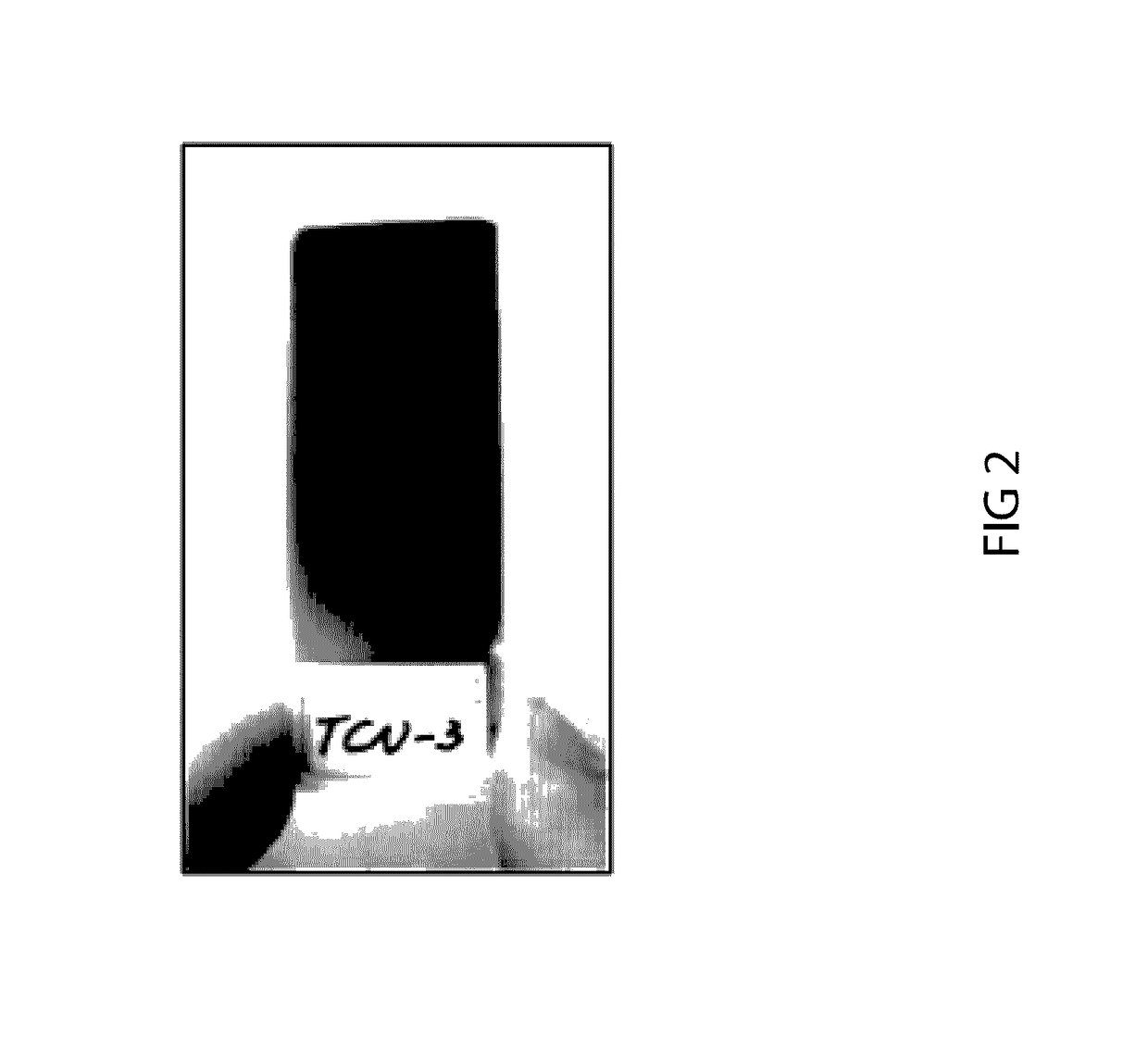Electromagnetic polymer composite material for anti-fouling effect
a composite material and electromagnetic technology, applied in the direction of electrically-conductive paints, magnetic paints, paints with biocides, etc., can solve the problems of bacterial fouling (biofouling) that pose potentially harmful impacts on human health, and achieve the effect of preventing bacterial adhesion
- Summary
- Abstract
- Description
- Claims
- Application Information
AI Technical Summary
Benefits of technology
Problems solved by technology
Method used
Image
Examples
example 1
[0047]Cashew nut shell liquid (CNSL) was tested as a model electroactive biopolymer. It demonstrated excellent antifouling activity when it was polymerized and cross-linked on a glass or a plastic surface.
[0048]Polyaniline was tested as a model conducting biopolymer. It demonstrated excellent conductivity when coated on either a glass or plastic surface in the range of 2×10−1-2×10−3 S / cm.
[0049]The antifouling composite agent disclosed herein was tested for its conductivity and antifouling effects. When there was a flow of electrolyte that has the total ionic strength of 0.1165 mol / L at 2 ml / min, the conductivity was measured in the range of 0.5-250 Amp / meter depending on the concentration of magnetic particles in the coating. The electrolyte was synthesized by adding 54 g of sodium phosphate, 0.88 g of potassium di-basic phosphate, 2.52 g / L and 3.21 g / L of sodium chloride and potassium chloride, respectively to the phosphate buffer.
example 2
[0050]The electroactive polymer and magnetic particle composite can be prepared as follows:
Enzymatic Polymerization of Antifouling Polymer (Polycardanol)
Materials: Cardanol (Cashew Nut Shell Liquid)
[0051]Soybean peroxidase (SBP, Enzyme)
[0052]Methanol
[0053]Phosphate butter
[0054]Hydrogen peroxide
[0055]Methyl ethyl ketone peroxide
[0056]Cobalt naphthenate
Method:
[0057]a. Prepare pH 7 phosphate buffer solution, 50 ml.[0058]b. Prepare 30% H2O2 solution.[0059]c. In a separate 500 ml beaker, mix 10 mg or soybean peroxidase (SBP) in an equivolume mixture of 12.5 ml of methanol and the phosphate buffer.[0060]d. Add 300 mg of cardanol into the SBP solution prepared above. Continuously stir the solution with a magnetic bar.[0061]e. Start adding H2O2 at 50 mL / hr for 3 hours using an infusion pump (syringe pump).[0062]f. Let it sit for 24 hours.[0063]g. Centrifuge the solution to precipitate the polymer in the bottom of a centrifuge tube.[0064]h. Wash the polymer with methanol and water and centri...
PUM
| Property | Measurement | Unit |
|---|---|---|
| contact angle | aaaaa | aaaaa |
| contact angle | aaaaa | aaaaa |
| diameter | aaaaa | aaaaa |
Abstract
Description
Claims
Application Information
 Login to View More
Login to View More - R&D
- Intellectual Property
- Life Sciences
- Materials
- Tech Scout
- Unparalleled Data Quality
- Higher Quality Content
- 60% Fewer Hallucinations
Browse by: Latest US Patents, China's latest patents, Technical Efficacy Thesaurus, Application Domain, Technology Topic, Popular Technical Reports.
© 2025 PatSnap. All rights reserved.Legal|Privacy policy|Modern Slavery Act Transparency Statement|Sitemap|About US| Contact US: help@patsnap.com



